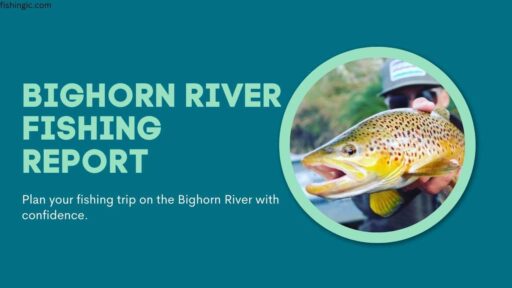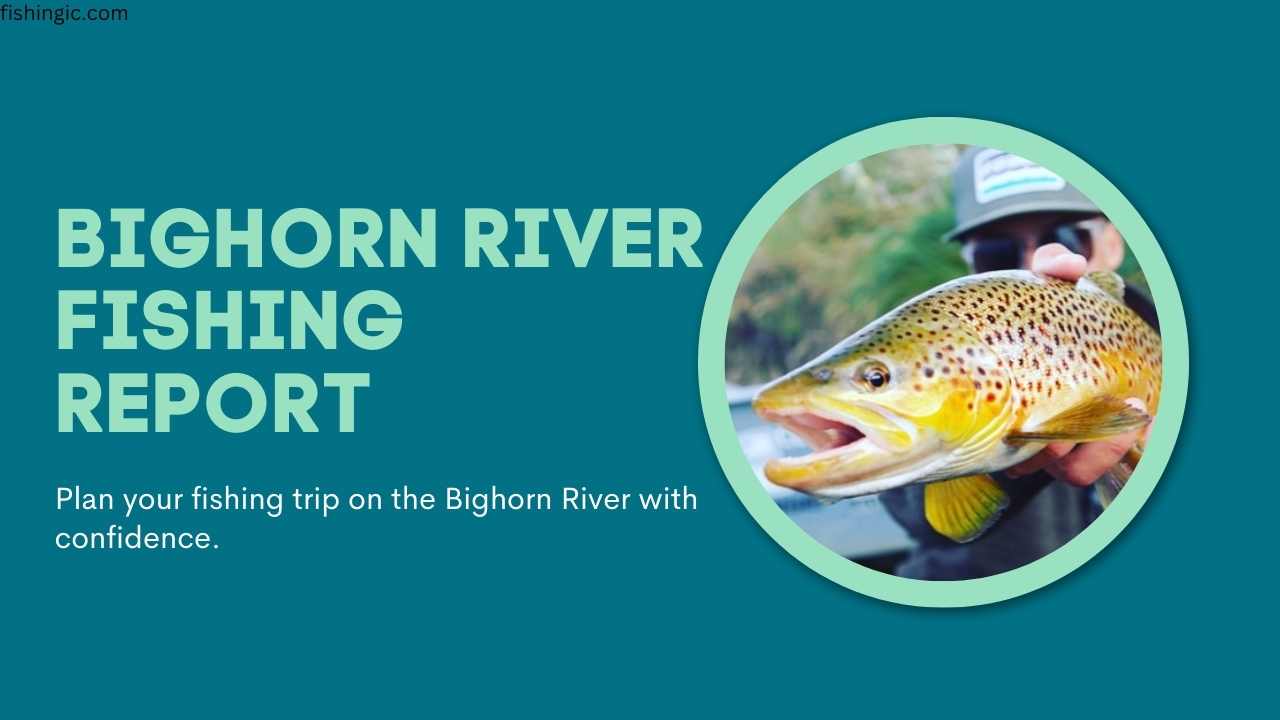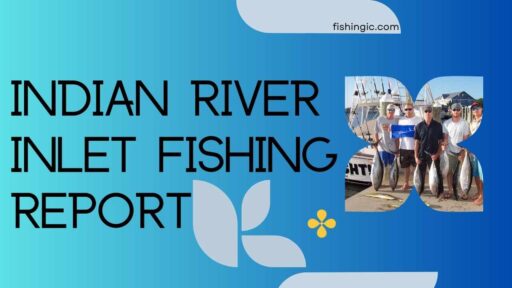As a keen fisherman and adventurer, I have explored some of the world’s most sought after fishing spots. But one river stands tall over all others – it’s the Bighorn River Fishing Report. It is in Montana. It is a paradise for anglers. They seek an exciting fishing experience. The waters are clear and full of fish. The views are breathtaking.
Bighorn River Fishing Report is good! Water’s clear and cold, with good flows. Fish are eating so bugs and midges, try nymphs and streamers fished slowly in slow to medium currents. Watch for occasional hatches of Baetids or midges. Best bet? Target the first 13 miles below the dam for trophy brown and rainbow trout.
Importance of Fishing Reports
When heading out on a fishing venture, it is important to gather as much information as possible about the existing fishing environment. This is where fishing reports come into play. A report will provide insight into water conditions, fish behavior, best techniques and bait to use. Therefore, by reading Bighorn River fishing report you can significantly increase your chances of catching that big one.
Current Fishing Conditions
It is vital before casting a line in the Big Horn River to understand its ever-changing moods. There are four horsemen that influence every move you make here; water levels, temperature, hatches, and fish behavior.
The Water Ripples with Intel
In the stillness of dawn the Bighorn’s waters chill from morning mist but watch them change as day grows on: they begin shining like bright diamonds. The way snowmelt trickles down affects how anglers should approach the river they are casting upon.
A Thermometer for Trout
This maxim ‘find food, find fish’ holds true, especially when relating to trout movement, which is largely determined by temperatures recorded in local weather forecasts. On hot summer afternoons, trout will seek cool, oxygenated water, whereas, during cold seasons, these same species will be found closer to warm thermal rivers.
Dancing with the Flies
Hatches are operas in insect land (and nothing less than brilliant ones), while this may be considered an understatement regarding what happens on Big Horn River at these times of the years. A good understanding of entomology is important because the right fly during a hatch is like being handed ‘tight lines.’
Decoding Fish Language
The Bighorn River Fishing Report behavior of fish serves as your compass. During hatches, trout concentrate on certain insects such as blue-wings, presenting an opportunity for successfully matching the hatch.
Credit:The Angler’s Path
Seasonal Variations and Tips
The seasons paint different shades across the Bighorn, calling upon different tactics for anglers.
Spring Thaw
Early in spring, water pours into the river, and hungry trout move to shorelines, seeking energy from the flowing all-you-can-eat buffet.
Summer Symphony
The summer will demand that you have many tricks up your sleeve as the river flows consistently, attracting a variety of bugs and emergences that ask for precise imitations.
Scents of Autumn
Autumn’s chillier nights, coupled with shorter days, bring changes of colors onto the river’s face. In runs, trout gather, preparing for winter isolation and easy pickings.
Winter Chill
During the deep cold of winter, trout inhabit slower, deeper pools where nymphs and Sanjuana are kings.
Targeted Fish Species
Rainbow and brown trout are the predominant species in the Bighorn River, which is known worldwide as a paradise for fishing enthusiasts. These two types pose challenges to anglers when it comes to fly fishing, yet they can be rewarding.
The Rainbow Trout
Like a rainbow with its various hues, this type of trout comes in many colors. It takes pride in its aerial displays, which will stretch your rod to its limits.
The Brown Trout
A wily river master, the brown has a predilection for nocturnal dinners. The golden color is a royal cloak appropriate for the king of cautious trout’s with a sharp sense.
Best Fishing Spots on Bighorn River
There are several excellent fishing spots in Bighorn River that provide satisfactory services for all anglers. For instance, one can go to the Bighorn Canyon National Recreation Area, where there are plenty of rainbow and brown trout.
Additionally, After bay, which is a popular stretch of the river is an incredible place to check out owing to its large brown trout population. On the other hand, those who may want some seclusion while fishing can choose Three Mile Access as their preferred spot, where they will be casting their lines in natural silence.
Recommended bait and tackle on Bighorn River
Bait and tackle are indispensable when discussing fishing necessities on the Bighorn River. Fly fishing enthusiasts should equip themselves with nymphs, streamers, and dry flies. Spin fishing lures such as spoons, spinners, and jigs are also effective options. Furthermore, worms, minnows, and salmon eggs are available since various fish species have preferences for different baits.
Best Fishing Techniques
Mastering success on Bighorn River is equivalent to artistic skill; here’s how you paint your angling canvas.
Choosing the Appropriate Fly
In this water system, there is an array of insects ranging from midges to Mayflies. You use your fly box containing midges, caddices, and streamers that appear like have just erupted from paint tubes when coming up with patterns for varying fishing situations.
Rigging Tough
A well-adjusted rig that went unnoticed by an angler during most of his or her expedition makes it a good silent partner during a day at fishing session. Nymph rigs using strike indicators to study subsurface feeding depths or dry dropper systems suited towards dimpling surface trout are two such approaches.
Gear Recommendations
The paraphernalia of a champion is top quality gear. When it comes to equipment for the Bighorn, expect a well-balanced fly rod that suits the river’s lumbering trout together with an agile reel provided with a silky drag system.
Safety Tips for Fishing on Bighorn River
The fishing experience on Bighorn River is outstanding; however, safety has to be given priority when you make your trip. You should always put on a life jacket while on water, regardless of whether you can swim or not.
Do not swim in strange parts of the river, as you know nothing about its currents. Besides, take insect repellent with you to prevent mosquitoes and other biting insects from attacking you. Finally, watch out for weather conditions by checking forecasts before moving out.
Other Activities and Attractions near the Bighorn River
Bighorn River is not only heaven-sent for anglers but also offers various activities and attractions that cater to everyone in a family setup. Stop angling once in a while and have fun at Bighorn Canyon National Recreation Area, where hiking can be done, camping pitched, or boating entertained.
If history interests you, try visiting Little Bighorn Battlefield National Monument, home to the Battle of Little Bighorn. Some people, however, may want something quiet involving bird watching or just admiring beautiful views around this water body.
Frequently Ask Question
What is the best time of year to fish on the Bighorn?
In any case, it is during spring and autumn, when the fish are much more active and feeding aggressively, that this river can be best fished.
Are there fishing limits on Bighorn River?
Absolutely. It is, therefore, important for anglers to acquaint themselves with Montana Fish, Wildlife & Parks’ regulations, which encompass catch limits, size restrictions as well as specific fishing seasons.
Can I go fishing in the Bighorn River without hiring a guide?
Though it may be possible to fish alone on the Bighorn River, engaging a local expert will make you have an experience of your lifetime while doing so. The guides possess vast knowledge about the river and they will also provide you with invaluable information as well as tips.
Conclusion of Bighorn River Fishing Report
This section shows that the Bighorn River is a fisherman’s heaven. It provides unforgettable memories for all levels of fishers. You can greatly improve your chances of getting that big catch. This comes from understanding the Bighorn River fishing report, knowing where to go fishing, and using the right baits and hooks. Remember safety first. But, also enjoy other attractions and activities there. Finally fill up your bags with provisions for camping at Big Horn River because it’s time for angling adventure once in life!






